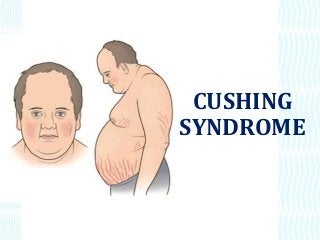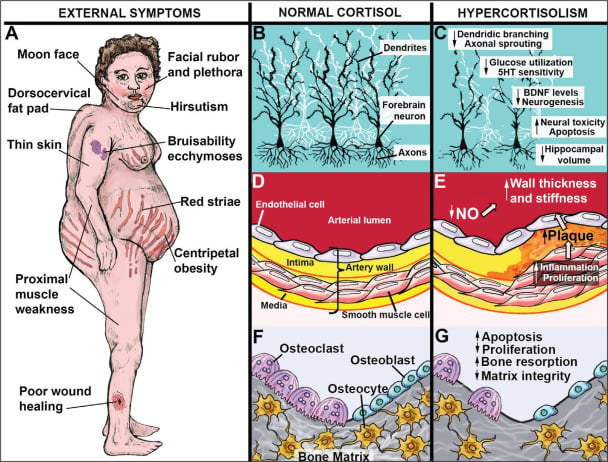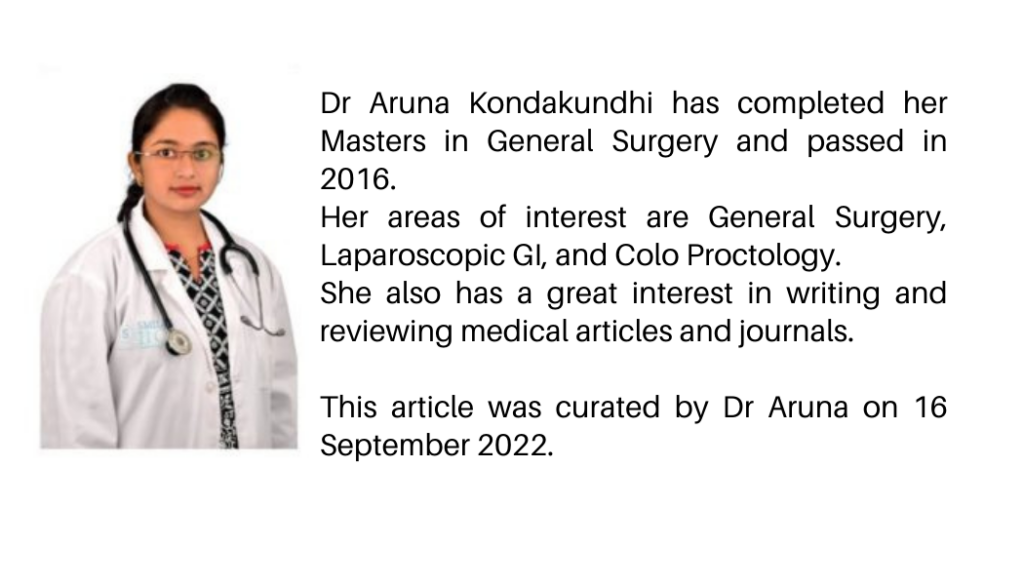Cushing Syndrome
What is Cushing Syndrome? Cushing syndrome occurs whenever there is an overuse of cortisol medications or food intake, resulting in very high cortisol levels in the blood. Cortisol also called as “Stress hormone,” plays a vital role in regulating our blood sugars and converting food into energy. Read More
Top Doctors For Cushing Syndrome Treatments
Top Hospitals For Cushing Syndrome Treatments
Cushing Syndrome
Table of contents
What is a Cushing’s Syndrome?
Cushing syndrome occurs whenever there is an overuse of cortisol medications or food intake, resulting in very high cortisol levels in the blood. Cortisol also called as “Stress hormone,” plays a vital role in regulating our blood sugars and converting food into energy.

Causes

This persistent high cortisol level over time, arising from the use of steroid drugs or cholesterol foods, is the common cause of this syndrome. It can also occur when the body’s adrenal and pituitary glands produce excess cortisol hormones.
Symptoms

The symptoms may include the following:
- Buffalo humps; fatty lumps between the shoulders and neck.
- Rounded, moon-shaped face
- Thinning of legs and arms
- Acne
- Stretch marks with shades of pink and purple.
- Excessive hair
- Uncontrollable hunger
- Fatigue and weakness
- Irregular or stopped menstrual cycle
- Peripheral edema
- Weight gain
- Weak muscles
- Loss of libido
- Infertility
- Anxiety and depression
- Insomnia
- Irritability
- High blood pressure
- Osteoporosis.
How is Cushing’s syndrome diagnosed?

In order to diagnose this, the doctor will first perform a physical examination to check for lumps and look for any physical signs of high cortisol levels. Other tests may include:
- Blood test, Urine test, and Saliva Tests; to check for high levels of cortisol.
- Imagery Tests such as MRI and CT scans to examine the images of the adrenal and pituitary glands for any trace of abnormalities or tumors.
- Petrosal sinus sampling; This test helps us determine whether the cause of Cushing syndrome is rooted in the pituitary gland or elsewhere. The blood sample is drawn from the petrosal sinuses (veins that drain the pituitary gland) during this test.
- 24-hour urinary-free cortisol level; this test will help us to test the levels of cortisol.
- Low dose dexamethasone suppression test
How is Cushing’s syndrome treated?
The type of treatment depends on the underlying cause. The treatment options include:
- Reducing steroid usage in order to reduce the risk of side effects associated with high cortisol levels.
- Medications such as:
- Ketoconazole
- Mitotane
- Metyrapone
- Mifepristone
- Pasireotide
- Radiation therapy to reduce and eliminate any tumor.
- Surgery, by removing the tumors that steroids may have caused.
- Transsphenoidal Surgery is performed through the nose and sinus cavity to remove brain tumors.
Diet
Avoid any food with high calories and cholesterol. Maintain a strict diet that the dietician should set. The patient can have a diary to keep track.
FAQ
The syndrome is a condition where there is excess cortisol in the body. Cushing’s disease is a major type of Cushing’s syndrome that occurs when a tumor in the pituitary gland produces a very high cortisol level.
Most of the cases diagnosed with the condition can be treated and cured. Having a regular follow-up with the doctor and maintaining a healthy weight, and following the medications advised by the doctor strictly can result in a good prognosis of the syndrome.
If it is handled effectively and treated, symptoms may begin to disappear within 2 months.
If left untreated, high cortisol level results in a round face, weight gain in the midsection and upper back area, and easy bruising. If it worsens, it can result in hypertension and osteoporosis.
It can happen to anyone of any age, but it commonly occurs in adults aged 30 to 50, and women are more affected than men.
Complications associated with the syndrome are:
a) Osteoporosis– Bone loss, which can result in unusual bone loss
b) Hypertension (increase in blood pressure)
c) Type 2 diabetes mellitus
d) Infections
e) Vascular atherosclerosis
f) Cardiac arrhythmia
g) Loss of muscle mass and strength
h) Mood changes or depression
i) High cholesterol 
Picture Courtesy: thelancet
The risk factors associated with the condition are:
a) Gender- It is seen as more common in females compared to men
b) Patients who are diagnosed with pituitary or adrenal tumors
c) Age- It affects ages between 25-50years
d) Patients who are on cortisol medications to treat asthma or rheumatoid arthritis
It is considered to be a rare syndrome. 40-70 people out of one million are affected every year [1].
Early diagnosis and treatment of the condition can result in a good prognosis. While if left untreated, it can result in life-threatening conditions, even death.
References
https://my.clevelandclinic.org/health/diseases/5497-cushings-syndrome

























































